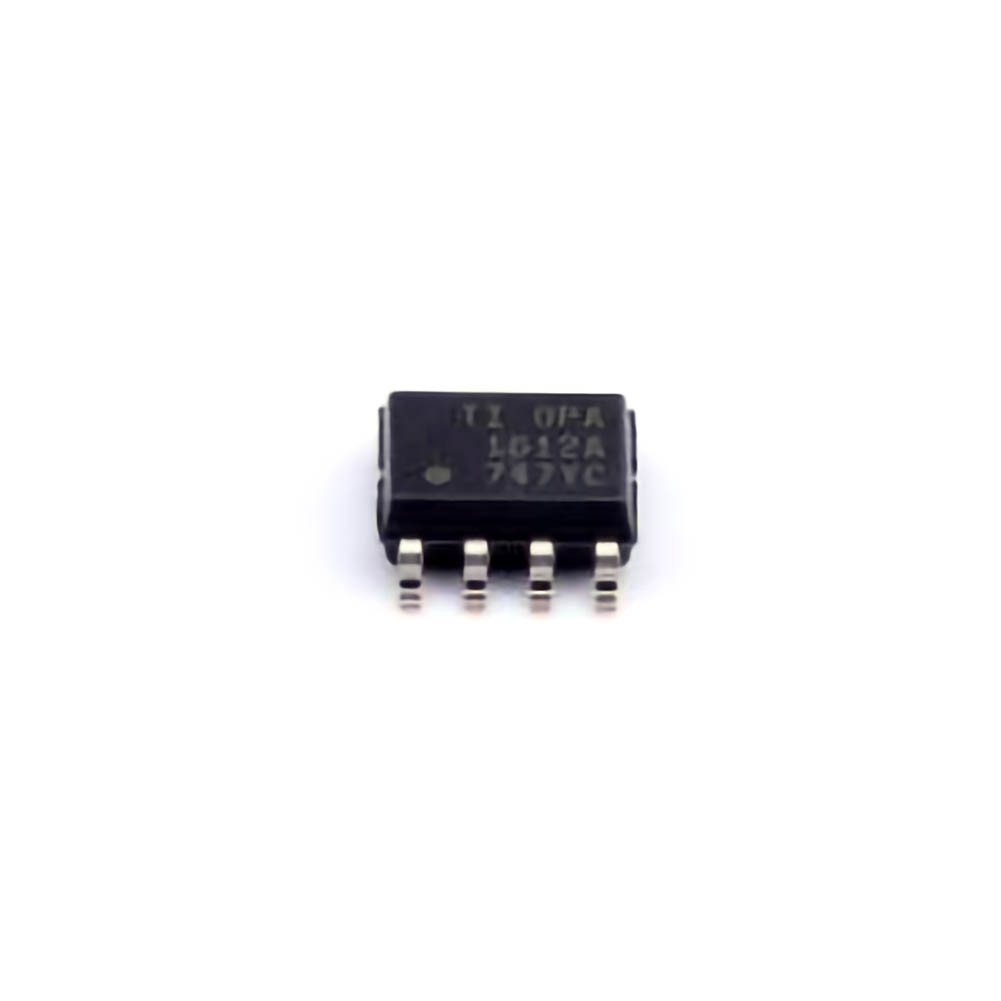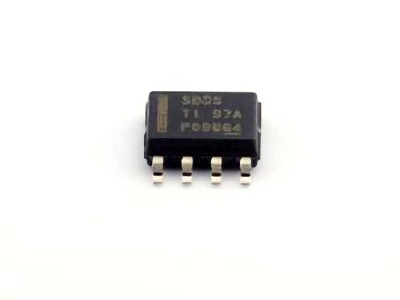
Introduction to OPA1612AIDR and Its Role in High-Fidelity Audio Circuits
In the world of high-fidelity (hi-fi) audio, achieving the clearest, most accurate reproduction of sound is paramount. Audio enthusiasts, engineers, and designers continuously seek components that can deliver outstanding performance with minimal distortion and coloration. One such component that has gained significant attention is the OPA1612AIDR, a precision operational amplifier developed by Texas Instruments. This op-amp is renowned for its exceptional characteristics, making it a go-to choice for audio amplification applications, especially in high-end audio systems.
The OPA1612AIDR Op-Amp: A Game-Changer for Audio Amplifiers
The OPA1612AIDR is a low-noise, high-performance op-amp that features ultra-low total harmonic distortion (THD) and excellent linearity across a wide frequency range. Designed with audiophiles and professional audio engineers in mind, it ensures pristine audio signal amplification, providing clear, dynamic, and natural sound reproduction.
One of the standout features of the OPA1612AIDR is its high slew rate (8 V/µs) and wide bandwidth (10 MHz), which allow it to respond quickly to rapid changes in audio signals. This is particularly crucial for preserving the transients and fine details in complex musical compositions. Additionally, the op-amp’s low offset voltage and low noise density further enhance its suitability for high-fidelity audio applications where any distortion or noise would compromise the listening experience.
Key Specifications of OPA1612AIDR
Noise Density: 1.1 nV/√Hz at 1 kHz
THD+N (Total Harmonic Distortion plus Noise): < 0.00003% at 1 kHz, 10 Vpp, 10 kΩ
Power Supply Voltage: ±3V to ±18V
Output Swing: Rail-to-Rail Output
Slew Rate: 8 V/µs
Bandwidth (Unity Gain): 10 MHz
These specifications make the OPA1612AIDR an excellent choice for high-fidelity audio amplifier circuits where low distortion, high linearity, and low noise are paramount.
Applications of OPA1612AIDR in Hi-Fi Audio Systems
The OPA1612AIDR is often employed in several key audio amplifier configurations, including:
Pre- Amplifiers : The low-noise characteristics of the OPA1612AIDR make it perfect for use in audio pre-amplifiers, where the signal is amplified before further processing. It ensures that the incoming audio signal remains pristine and unaltered.
Headphone Amplifiers: The op-amp’s high slew rate and low distortion characteristics are ideal for driving high-impedance headphones, providing high output power while maintaining a clean and dynamic sound.
Integrated Amplifiers: When used in integrated amplifiers, the OPA1612AIDR can offer both pre-amp and power amplification stages, ensuring top-tier performance across the entire frequency range.
Signal Processing Equipment: The op-amp’s low noise and high accuracy make it suitable for various signal processing applications where fidelity is critical.
With its combination of low noise, high slew rate, and low distortion, the OPA1612AIDR provides the necessary ingredients for achieving impeccable sound quality in high-end audio systems.
Design Optimization for High-Fidelity Audio Amplifier Circuits with OPA1612AIDR
While the OPA1612AIDR op-amp is a high-performance component in its own right, designing a high-fidelity audio amplifier that fully exploits its capabilities requires a thoughtful approach. In this section, we will explore how to optimize the design of an audio amplifier circuit that incorporates the OPA1612AIDR to achieve the best possible sound quality.
1. Power Supply Considerations
The power supply is one of the most critical aspects of any audio amplifier circuit. The OPA1612AIDR op-amp operates with a supply voltage range from ±3V to ±18V, but the cleanliness and stability of the power supply play a crucial role in ensuring the op-amp delivers its full performance potential. For audiophile-grade amplifiers, it’s recommended to use a regulated and low-noise power supply. A noisy or unstable power supply can introduce hum, buzz, and other unwanted artifacts into the audio signal.
Furthermore, the power supply voltage should be chosen carefully to match the requirements of the audio amplifier while allowing for maximum output swing. This helps in preserving signal integrity and minimizing distortion, especially when driving high-impedance loads or speakers with demanding power requirements.
2. Input and Output Stage Optimization
When designing an audio amplifier circuit with the OPA1612AIDR, optimizing the input stage and output stage is essential for achieving optimal performance. The OPA1612AIDR has a rail-to-rail output, meaning it can output voltages that approach the supply rails, which is ideal for driving speakers or headphones with minimal distortion.
The input stage should be designed to provide a high-impedance input that minimizes any interaction with the source device. An active buffer stage can be included at the input to provide impedance matching and ensure that the OPA1612AIDR receives a clean signal.
For the output stage, depending on the power requirements of the application, a complementary push-pull transistor configuration can be used. This configuration provides high current capability while maintaining low distortion, especially at higher output levels. Additionally, care should be taken to ensure proper feedback network design, as the OPA1612AIDR's performance depends heavily on the feedback loop’s stability and accuracy.
3. PCB Layout and Grounding Techniques
In high-fidelity audio designs, PCB layout and grounding techniques are often the unsung heroes of sound quality. To maximize the OPA1612AIDR’s performance, careful attention must be paid to the layout of the power and signal traces, as well as the placement of the op-amp on the PCB.
Minimize Signal Path Length: The signal path should be as short and direct as possible to reduce parasitic capacitance and inductance that can degrade the signal quality.
Separation of Analog and Digital Grounds: If the design includes any digital circuitry, it is essential to separate the analog ground (for the op-amp and audio signal paths) from the digital ground. Ground loops can introduce noise, so a star grounding method is often preferred, where all grounds meet at a single point.
Use of Decoupling capacitor s: Proper decoupling capacitors should be placed close to the power pins of the OPA1612AIDR to filter out any power supply noise that may affect the op-amp's performance. A combination of bulk capacitors (to filter low-frequency noise) and high-frequency bypass capacitors (to filter high-frequency noise) is typically used.
Use of Copper Pour: A solid copper pour can be used for the ground plane to minimize impedance and provide a low-resistance path for signals, helping to reduce noise and maintain signal integrity.
4. Thermal Management
High-fidelity audio amplifiers, particularly those driving demanding speakers, can generate significant heat. Therefore, thermal management should not be overlooked in the design process. The OPA1612AIDR itself generates minimal heat, but if it is used in a power amplifier circuit with high output transistors, ensuring proper heat dissipation through heatsinks or active cooling can prevent thermal runaway and distortion caused by temperature-induced changes in component characteristics.
5. Testing and Fine-Tuning
Once the amplifier circuit has been designed and built, rigorous testing and fine-tuning are required to ensure the best possible performance. It’s recommended to use an oscilloscope and signal analyzer to check for any unwanted artifacts such as clipping, distortion, or noise. Fine-tuning the feedback network, adjusting component values, and optimizing the power supply for the specific application can lead to significant improvements in sound quality.
Conclusion
The OPA1612AIDR op-amp stands as a powerful tool for audio engineers and designers looking to build high-fidelity audio amplifiers with impeccable sound quality. By carefully selecting components, optimizing the circuit design, and paying close attention to power supply, grounding, and layout, it’s possible to unlock the full potential of this remarkable op-amp and achieve audio performance that exceeds expectations. Whether used in pre-amplifiers, headphone amplifiers, or integrated amplifiers, the OPA1612AIDR’s combination of low noise, high linearity, and wide bandwidth makes it an indispensable component in the pursuit of perfect audio fidelity.
If you are looking for more information on commonly used Electronic Components Models or about Electronic Components Product Catalog datasheets, compile all purchasing and CAD information into one place.


